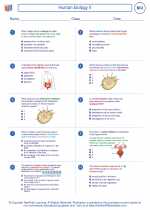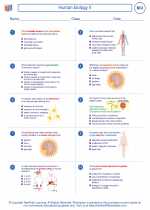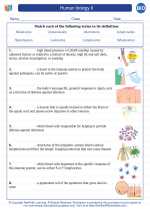Bases in Biology
In biology, bases are a class of chemical compounds that can accept protons (H+) and are considered the chemical opposite of acids. Bases are an essential component of many biological processes and are crucial for maintaining the pH balance within living organisms.
Properties of Bases
Bases have several key properties:
- Proton Acceptors: Bases have the ability to accept protons, which allows them to neutralize acids.
- Bitter Taste: Many bases have a bitter taste, although it's important to note that tasting chemicals is not recommended.
- Slippery Feel: Some bases feel slippery or soapy to the touch.
- Conductivity: Aqueous solutions of bases conduct electricity due to the presence of hydroxide ions (OH-).
- pH Level: Bases have a pH greater than 7, indicating their alkaline nature.
Biological Importance of Bases
Bases play critical roles in biological systems, including:
- Enzyme Function: Many enzymes require a specific pH range for optimal activity, and bases help maintain this pH balance.
- Cellular Homeostasis: Bases are involved in regulating the pH of intracellular and extracellular fluids, which is crucial for maintaining cellular function.
- Buffering: Bases, along with their conjugate acids, contribute to the buffering capacity of biological systems, helping to resist changes in pH.
Examples of Bases in Biology
Some common bases in biological systems include:
- Sodium Hydroxide (NaOH): Found in certain cellular processes and used in laboratory experiments.
- Potassium Hydroxide (KOH): Used in the synthesis of certain compounds and as a reagent in laboratory settings.
- Ammonia (NH3): Produced in cells as a waste product and also used in the production of fertilizers.
Study Guide for Bases
When studying bases in biology, consider focusing on the following key areas:
- Understanding the chemical properties of bases and how they differ from acids.
- Exploring the biological roles of bases in maintaining pH balance and cellular function.
- Learning about specific examples of bases and their relevance in biological systems.
- Practicing the calculation of pH and understanding how bases contribute to buffering capacity.
- Exploring the potential impact of imbalances in bases on biological systems.
By mastering these concepts, you will develop a comprehensive understanding of the role of bases in biology and their significance in living organisms.
.◂Biology Worksheets and Study Guides High School. Human biology II
Worksheet/Answer key Human biology II
Human biology II  Worksheet/Answer key
Worksheet/Answer key Human biology II
Human biology II  Worksheet/Answer key
Worksheet/Answer key Human biology II
Human biology II  Vocabulary/Answer key
Vocabulary/Answer key Human biology II
Human biology II  Vocabulary/Answer key
Vocabulary/Answer key Human biology II
Human biology II  Vocabulary/Answer key
Vocabulary/Answer key Human biology II
Human biology II  Vocabulary/Answer key
Vocabulary/Answer key Human biology II
Human biology II  Vocabulary/Answer key
Vocabulary/Answer key Human biology II
Human biology II  Vocabulary/Answer key
Vocabulary/Answer key Human biology II
Human biology II  Vocabulary/Answer key
Vocabulary/Answer key Human biology II
Human biology II 

 Worksheet/Answer key
Worksheet/Answer key
 Worksheet/Answer key
Worksheet/Answer key
 Vocabulary/Answer key
Vocabulary/Answer key
 Vocabulary/Answer key
Vocabulary/Answer key
 Vocabulary/Answer key
Vocabulary/Answer key
 Vocabulary/Answer key
Vocabulary/Answer key
 Vocabulary/Answer key
Vocabulary/Answer key
 Vocabulary/Answer key
Vocabulary/Answer key
 Vocabulary/Answer key
Vocabulary/Answer key

The resources above cover the following skills:
LIFE SCIENCE (NGSS)
From Molecules to Organisms: Structures and Processes
Students who demonstrate understanding can:
Develop and use a model to illustrate the hierarchical organization of interacting systems that provide specific functions within multicellular organisms.
Plan and conduct an investigation to provide evidence that feedback mechanisms maintain homeostasis.